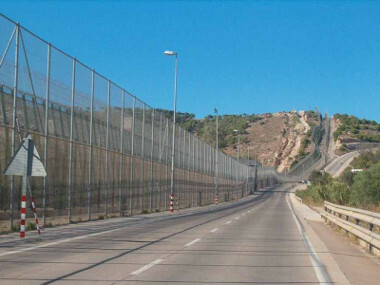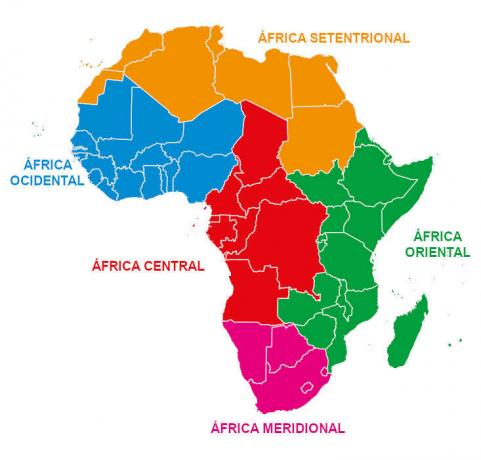As we can see from the map above, Spain is part of the European continent that is separated from Africa by the Mediterranean Sea. At the Strait of Gibraltar, there is a small gap separating the two regions, where the city of Ceuta and, further east, the city of Melilla are located. These two cities are under the domain of Spain, which claims to have these territories even before the constitution of Morocco, the country where these cities are located.

Larger scale map with the location of Ceuta and Melilla ¹
Since joining the European Union, Spain has reinforced its borders in these two locations with the territory Moroccan to prevent or at least contain the entry of immigrants from Africa into the Spanish space and, consequently, throughout the Europe. With this, the walls of Ceuta and Melilla were built to completely bar the presence of Moroccans in the border areas.
If we look at the position of these cities on the maps above, it is possible to see their strategic location both with regard to its access to the Mediterranean Sea and its proximity to the mainland European. With this, Spain, with the support of the European Union, insists on continuing to hold these areas, although their soils are not very fertile, and economically, cities are not, in theory, very profitable.
The borders between Morocco and Spain are small, considered one of the smallest in the world. Therefore, for the Spaniards, the construction of the walls of Ceuta and Melilla is considered viable, in addition to being understood as fundamental to contain the frequent attempts of illegal immigration in the region and to guarantee the sovereignty of this territory. Both cities are dubbed Europe's “back entrance” for illegal immigration.
Do not stop now... There's more after the advertising ;)

Image of the Ceuta Wall ²

Image of the Melilla Wall ³
The walls built, however, seem not to function fully effectively in containing illegal immigrants, who seek Europe for better income and employment opportunities. In 2014, for example, the reception center for immigrants in Melilla had a capacity that was almost four times greater than its capacity. In addition, in February 2014, 15 immigrants died trying to swim in Spain, leaving the city of Ceuta, a fact that generated hardships. criticism of the Spanish government, as evidence indicated that the country's military forces attacked populations with rubber bullets during the period. path.
Therefore, the Spanish government, backed by the European Union, decided to reinforce the two walls in Ceuta and Melilla, which add up to approximately 20 km in length, which includes the construction of a hydraulic gate in an area of stream in Ceuta.
What can be concluded with this issue of the walls of Ceuta and Melilla – which are added to other walls, like the one from mexico, the extinct Berlin Wall it's the Israel wall – is that such barriers are not only a territorial demarcation, but a symbolic division in terms of the division between the developed and the underdeveloped world, summarized in the separation between north and south that demarcates the world order current.
___________________________
¹ Image credits: Anarkangel / Wikimedia Commons
² Image credits: Xemenendura / Wikimedia Commons
³ Image credits: Ongayo / Wikimedia Commons
By Me. Rodolfo Alves Pena
Would you like to reference this text in a school or academic work? Look:
PENA, Rodolfo F. Alves. "Walls of Ceuta and Melilla"; Brazil School. Available in: https://brasilescola.uol.com.br/geografia/muros-ceuta-melilla.htm. Accessed on June 27, 2021.


